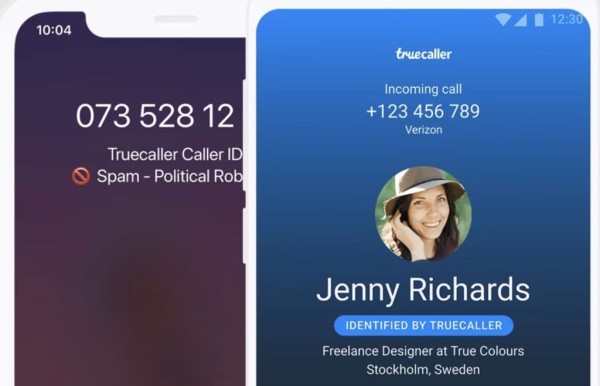In This Article
Have you ever heard about a sneaky thief who can steal your stuff without leaving their house? That is what cybercriminals do, except they target your online information to steal sensitive data like login credentials and credit card details. Sometimes, they even lock you out of your computer through a hacking attempt.
Believe it or not, this is called cybercrime, and it’s like being robbed in the digital world. But just like there are ways to protect your stuff in real life, there are strategies to keep your computer, mobile, and digital information safe online.
In 2023, the global average data breach cost increased by 15%, reaching USD 4.45 million. Unfortunately, only 51% of organizations plan to ramp up cybersecurity investments. Malicious actors always search for new targets, and we wonder how long businesses without cybersecurity prevention methods can survive.
In this blog post, we’ll share five types of cybercrimes commonly used by cybercriminals and methods for protecting yourself and your data online in 2024.
Overview of the Types Of Cybercrimes To Be Wary Of

Cybercrime is evolving, and the relatively less-secured remote work culture and insider threats have added to the misery. It’s becoming easier for hackers to bypass weak security systems, access devices, steal or intercept details, send phishing emails, and perform other cybercriminal activities.
So, here’s what you need to be aware of:
- Phishing: Phishing is like digital fishing. Attackers or phishers send messages with links (through text, email, or social media posts) to trick you into clicking on them and stealing your personal information, like passwords or credit card details.
- Ransomware: Imagine if someone breaks into your house, but instead of stealing your expensive LED TV, they lock all your doors and windows and leave a note saying they’ll unlock everything for a hefty price. That is what Ransomware does in the digital world. It sneaks onto your computer or phone, locks all your important files (like photos, documents, and games), and demands a ransom to get them back.
- DDoS Attacks: DDoS stands for Distributed Denial-of-Service attack. To understand it better, imagine a million people trying to order pizza from the same tiny shop at once, making them unable to serve anyone. That is what a DDoS attack is like for the website. These attacks can shut down online stores, game servers, or banking channels.
- Malware Injection: Suppose you are reading an online newspaper, and suddenly, weird popup ads flood your screen, bombarding you with tons of offers to get free phones. In reality, those aren’t annoying ads but sneaky tricks by hackers to motivate you to click on those ads in an attempt to infect your computer with malware. That’s exactly what malware injection is like!
- Man-in-the-middle Attacks: In this attack, a hacker secretly snoops, tampers, or eavesdrops on your online conversations or intercepts your online purchase to steal your sensitive information, such as passwords or credit card details, without you knowing.
Phishing

In phishing, threat actors try to deceive targets into sharing sensitive information like login credentials, financial details, medical reports, etc., that hackers exploit to make money or sell on the dark web or to competitors and rivals.
Phishers use social engineering skills to manipulate the trust that users have in familiar people. They may pose as colleagues, friends, or authority figures to gain credibility and increase the likelihood of a successful attack. Phishing communication can occur through emails, phone -calls, SMS, social media chats, etc. The trend of WhatsApp-based phishing calls and messages is on the rise. Fake employers, pretending to be from the US, communicate on the pretext of fake job offers to deceive users into sharing personal details.
Moreover, cyber actors have also started leveraging Generative AI’s capabilities to produce convincing emails and documents without grammatical, spelling, or translation errors, which are considered red flags or signs of phishing attacks.
Prevention From Phishing
- Use email filtering and anti-phishing tools to analyze incoming emails for malicious content and links and block them.
- Enable multi-factor authentication for all accounts, especially those containing sensitive information, to add a layer of security by necessitating users to provide multiple forms of identification.
- Keep all software and devices updated and patched, as outdated technology is one of the easily exploitable vulnerabilities.
- Practice yourself and encourage your employees to confirm unusual or unexpected requests before proceeding.
- Use email filtering solutions to identify and block malicious emails, reducing the likelihood of users falling victim to phishing attacks.
- Implement DMARC: DMARC (Domain-based Message Authentication, Reporting & Conformance) is an email authentication protocol that helps protect your domain from unauthorized use in email spoofing attacks. By implementing DMARC with the help of a DMARC MSP (Managed Service Provider), you can receive reports on how well your emails are authenticated and take steps to improve your email security posture.
Ransomware

In a ransomware attack, malicious actors gain unauthorized access to a victim’s system to encrypt data or devices and demand a ransom payment in exchange for restoring access. They threaten victims to permanently delete data or make it public if they don’t pay the demanded amount within time.
These days, they have started demanding ransom in cryptocurrency to avoid the chances of getting tracked down. They instruct victims on how to transfer the funds to their digital wallets.
However, there’s no guarantee that victims will get all the data back or that the threat actors will not make copies. That’s why law enforcement agencies and cybersecurity experts discourage paying ransoms, as it doesn’t prevent future attacks.
Prevention From Ransomware
- Have automated backup processes in place.
- Periodically test data restoration to ensure the backup systems are working properly.
- Use network segmentation to hide key systems and data from the rest of the network.
- Use application allowlisting to permit only approved applications to run on your devices and disallow unauthorized or malicious programs to crawl on your systems.
Distributed Denial-Of-Service (DDoS) Attacks

Hackers use multiple types of machinery to attempt DDoS attacks, which aim to overwhelm a targeted system with internet traffic, causing it to crash temporarily or permanently. They aim to make an online service inaccessible for a specific time. Ideology, political agendas, business feuds, cyber warfare, and extortion mainly drive DDoS attackers.
Although hackers sometimes don’t attempt DDoS attacks with these agendas, we are talking about amateur or would-be hackers who use prewritten scripts for ‘learning.’
Three main types of DDoS attacks are;
- Volume-Based: Bad actors overwhelm the bandwidth of the targeted site, and its scale is quantified in terms of bits per second (Bps).
- Protocol Attacks: DDoS attacks consume server resources such as communication equipment, firewalls, load balancers, etc.
- Application Layer Attacks: In this type, the incoming requests look legitimate but are actually sent to crash the web server.
NETSCOUT, a network performance and security company, revealed in its DDoS Threat Intelligence Report: Issue 11 that approximately 7.9 million DDoS attacks were launched in the first half of 2023, representing a 31% year-over-year increase. Global events like the Russia-Ukraine war and NATO bids triggered this growth, thus underlining the necessity of preventive methods.
Prevention From Distributed Denial-Of-Service (DDoS) Attacks
- Deploy a cloud-based DDoS protection service, firewall, intrusion detection and prevention systems, and load balancers that filter malicious traffic so that only legitimate traffic reaches your network.
- Use the Anycast DNS routing method to distribute requests across servers so that a single server is not overloaded.
- Implement rate-limiting and filtering mechanisms on your network devices to restrict the volume of incoming requests. By controlling the rate at which traffic is processed and preventing the saturation of network resources, you can mitigate the impact of DDoS attacks.
Malware Injection

Malware is undoubtedly one of the easiest and most common attack vectors to hit systems. It is fast, efficient, and simple for hackers to manage. Malware injection means forcibly inserting malware into a software, device, program, website, or web browser to steal or intercept data, proxy cryptocurrency mining, remote access to cameras and microphones, encrypt data for ransom, and disrupt operations.
Common malware attack vectors are viruses, Trojan Horses, spyware, adware, worms, rootkits, ransomware, keyloggers, botnets, and logic bombs.
Prevention From Malware Injection
- Ensure you have validated and sanitized all user inputs before you process them so that input fields accept only prespecified data types and lengths.
- Use parameterized statements or prepared statements in database queries so that the system manages the input details as just data and not executable codes.
- Use content security policy headers (CSPs) in web applications to specify the sources from which the browser is limited to loading content.
Man-in-the-Middle (MiTM) Attacks

A MiTM attack occurs when an adversary virtually positions themselves in a conversation between two users or systems to eavesdrop on or impersonate one of the entities without tipping off anyone. They obtain or modify information for identity theft or approving illegitimate fund transfers.
Common methods used in Man-in-the-Middle attacks include:
- Packet Sniffing: Intercepting and analyzing network traffic to capture sensitive information.
- DNS Spoofing: Redirecting domain name resolution requests to malicious servers, leading users to fake websites.
- Wi-Fi Eavesdropping: Monitoring and intercepting data transmitted over unsecured Wi-Fi networks.
- Session Hijacking: Taking control of an established session, often through token theft or session fixation.
Prevention From MiTM Attacks
- Implement end-to-end encryption for data in transit.
- Use public key infrastructure or PKI to manage and protect digital keys as they verify the parties communicating.
- Use WPA3 (Wi-Fi Protected Access 3) for Wi-Fi networks, as it provides stronger security than older protocols. Additionally, strong and unique passwords for Wi-Fi access points should be used to prevent unauthorized access.
- Avoid using public networks, especially for accessing and exchanging sensitive details. Use a VPN to secure your connection when using public networks in emergencies.
Conclusion
Cybercrimes are not expected to come down anytime soon; thus, a combination of cybersecurity strategies and a watchful or vigilant mindset is what you need on the floor. Consider implementing DMARC for comprehensive email security; services like PowerDMARC can simplify the process.
Moreover, you can’t overlook the fact that humans are the weakest link in cybersecurity as they are susceptible to social engineering; it’s easier to fool and hack people than technology. So, being a business owner, you need to pay attention to employee training and conduct regular unannounced mock drills to keep them aware of these attacks.











